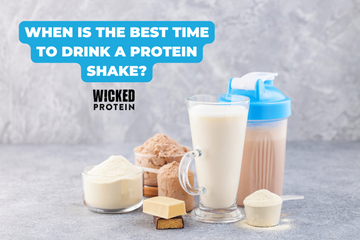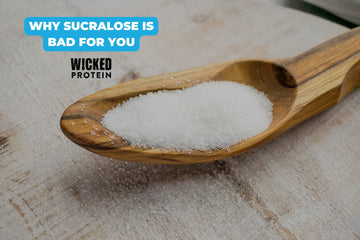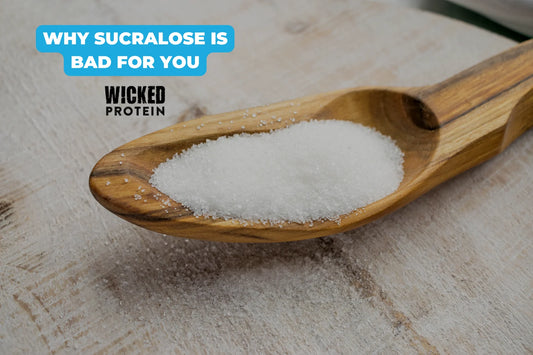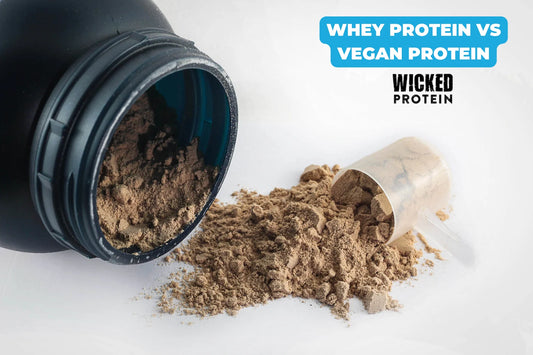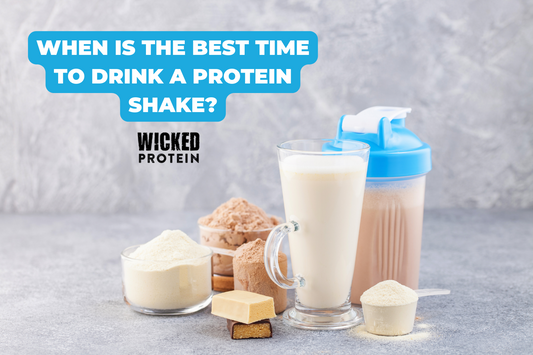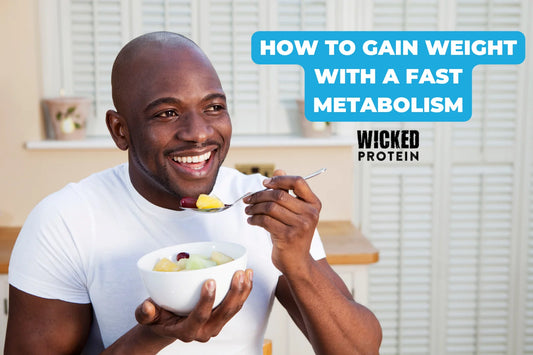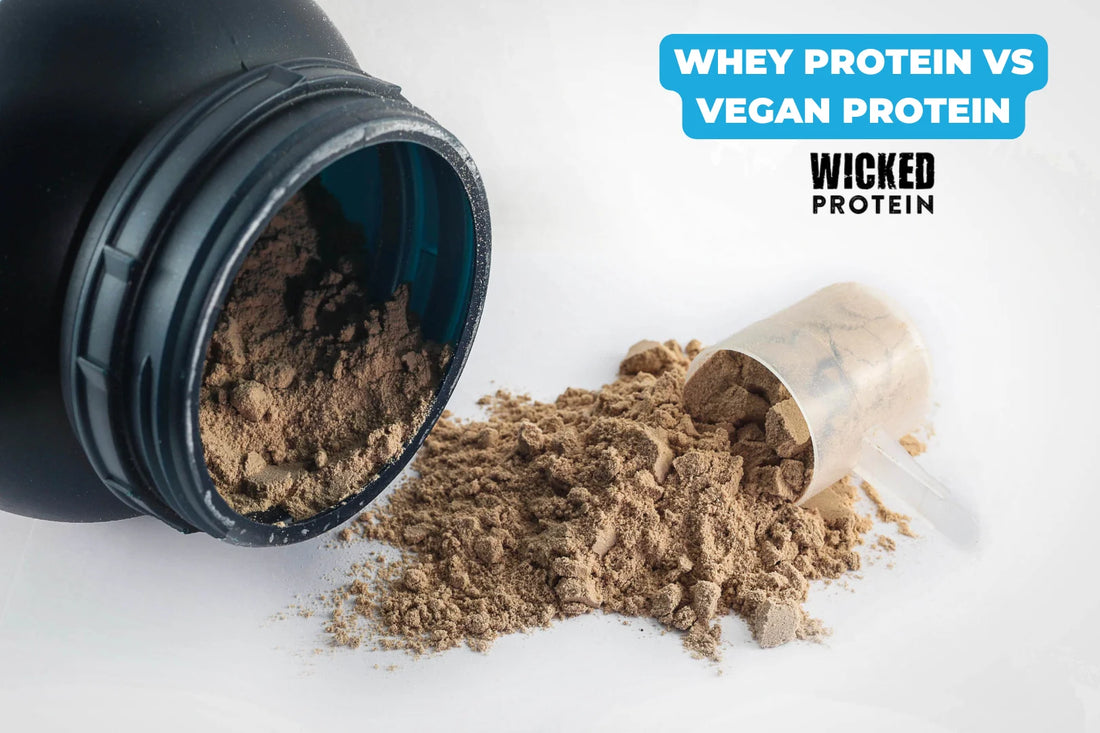
Whey vs Plant Protein: Which Is Better For You?
It’s no secret that protein is absolutely essential when it comes to building and repairing muscle.
Both whey protein and plant-based protein provide muscle growth benefits when consumed, but what are the main differences and which one is better for you?
In this guide, we’ve covered everything you need to know about whey and plant protein, and which one you should pick in your journey.
Understanding Protein
What Is Whey Protein?
Whey protein is a protein source that is derived from cow’s milk during the cheese-making process. It is a complete protein and contains all nine essential amino acids that the body cannot produce on its own.
It is easily absorbed and utilized by the body for muscle growth and repair, and is also rich in BCAAs, particularly leucine.
What Is Plant Protein?
Plant protein is derived from plants such as peas, soy, hemp, brown rice, and more. Some brands blend proteins from different plant sources to make them complete.
They’re a great option for vegetarians or vegans who need to get their protein intake in without using any animal products.
A single plant-based protein source does not contain all nine essential amino acids. However, combining multiple sources is very common and provides the same amount of amino acids as whey protein does.
Differences Between Whey And Plant-Based Protein
Both plant and whey protein are good for muscle growth and repair, but there are differences that make whey protein slightly better.
Amino Acid Profile
Whey protein, especially whey isolate, has a complete profile of amino acids, which are crucial for various bodily functions, like muscle protein synthesis and immune support.
Plant-based protein sources can also provide all essential amino acids when mixed together, but the levels of specific amino acids like leucine are usually lower in plant protein than in whey protein.
Leucine Content
Leucine content in whey protein is around 10%, making it one of the highest natural sources of leucine.
Plant-based proteins have lower leucine content and require a higher intake to reach the same threshold as whey protein.
Digestibility and Absorption
Whey protein has a high digestibility and a fast absorption rate, which is great for post-workout recovery.
Plant-based protein can vary in digestibility based on the plant source and processing methods. Pea protein is known for its digestibility and is a great alternative for people with lactose intolerance.
Which Is Better?
When it comes to the debate of which protein type is better, there is limited evidence that puts one over the other.
Whey protein does have more amino acid content and is absorbed faster in the body, but plant protein is an ethical choice and doesn’t contain lactose, so the choice is really up to your personal preference.
If you’re using and enjoying whey protein, there’s no reason to replace it with a plant-based version. The same goes both ways.
Which Should I Choose?
Whichever type of protein you choose, make sure to read the label carefully and avoid artificial ingredients, thickeners, and flavors or colors.
WICKED Whey Isolate is a clean, premium option for whey protein enjoyers that athletes around to world trust to maximize their endurance and performance. Not only are the ingredients effective, but they’re also tasty and completely natural.
How They're Made
How Whey Protein Is Made
Whey protein is a by-product of chees, derived from the liquid remaining after milk is curdled and strained. Here's a step-by-step overview:
- Milk Processing: The process begins with milk, which contains two main proteins - casein and whey.
- Coagulation: Enzymes or acids are added to the milk to curdle it, separating the solid curds (casein) from the liquid whey.
- Filtration: The whey liquid is separated from the curds through filtration.
- Pasteurization: The whey is pasteurized to remove any harmful bacteria.
- Drying: The liquid whey is dried into a powder form through processes like spray drying.
- Protein Isolation: Isolating the proteins from the whey, resulting in the final whey protein powder.
How Plant Protein Is Made
Plant-based proteins are derived from plants like peas, soy, rice, and hemp. Here's an outline of how plant protein powder is typically made:
- Extraction: Breaking down the plant material to separate and extract the protein.
- Filtration: After extraction, the protein is filtered to remove impurities and excess fiber.
- Drying: The protein-rich liquid is dried to form a concentrated protein powder.
- Packaging: The dried protein powder is then packaged for distribution and consumption.
Cost Comparison
The actual cost of protein powders can vary depending on the brand and quantity you purchase. Whey protein typically ranges from $15 to $31 per pound, while plant-based options, such as soy protein range from $8 to $24 per pound.
Pea protein may cost between $9 and $40 per pound, and hemp protein $12 to $34 per pound.
Each type of protein has a similar price range, so there is no “cheaper” option between whey and plant protein.
It’s important to choose a protein powder brand that is made with quality, clean ingredients to avoid any health issues later down the line.
Conclusion
It’s important to consider your individual preferences and goals before deciding on buying whey or plant protein.
Both offer unique benefits and can be more beneficial for different lifestyles and fitness goals.
Whether you settle for whey or plant protein, it’s important to meet your daily protein needs to maximize the benefits you get.


